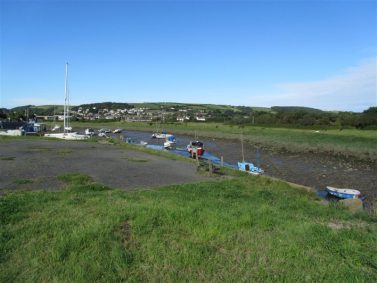Visitors to modern-day Braunton might be surprised to learn that much of the village’s economic success has been built upon its maritime history. Once a significant ship-owning centre with strong links to the sea, Braunton’s Velator Quay was a thriving, bustling, noisy port, vastly different to today’s tranquil scene; now a favoured area for fantastic views, open skies, walking, recreational sailing and bird watching.
The history of Velator Quay is closely entwined with that of the Braunton Marsh, and in many respects to that of the adjacent Great Field – from which produce was loaded onto ships for transport, and workers led dual lives as both mariners and farm workers.
Braunton was once far less remote from the sea that it may now appear. As recently as 1815 the tidal reaches of the Taw Torridge Estuary once reached Wrafton, with local legends of storm tides reaching as far as Wrafton road. The remains of a harbour or sea wall at Wrafton can still be found on private land close to a railway underpass on what is now the Tarka Trail.
Activities
Vellator Quay is a great place to picnic or simply enjoy the view.
A walk along the embankment westward from the Quay enjoys spectacular views of the estuary and the Braunton Marsh. Depending on how far you care to walk, the embankment leads you past the Toll House which marks the start of the Toll Road and can be accessed by car for a small fee.
This privately managed road follows the embankment and ends after a few miles at the White House, signifying the end of the Marshes and the start of the Braunton Burrows. A walk along the beach will lead you to Crow Point.
Back toward Braunton along the embankment is an open area of grass and the junction of the tidal Braunton Pill with the Caen River. On the opposite side of the road is the site of a weigh bridge associated with the Quay. Just a short distance along the road after the bridge is the Tarka Trail – once the route of the Barnstaple – Ilfracombe railway line.


